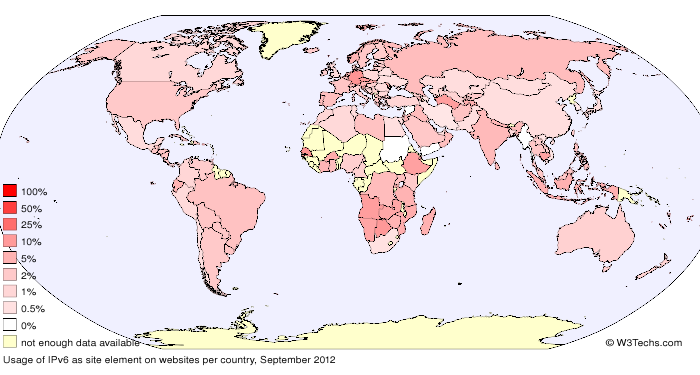Featured products and servicesadvertise here
Blog CategoriesAllNews AddToAny Adobe Commerce Adobe DTM AdRoll Advertising Networks Akamai Alibaba Amazon Amazon Associates Amazon CloudFront Angular Animate Apache ASP.NET ASP.NET Ajax Baidu Analytics Baidu Share Bitrix Blogger Bootstrap CDNJS CentOS Character Encodings China Telecom China Unicom Chitika Client-side Languages Cloudflare Cloudflare Server ColdFusion Compression Concrete CMS Content Delivery Content Languages Content Management Cookies CSS Frameworks Data Centers DataLife Engine Debian Default Protocol Https DigiCert DigiCert Group Discuz! DNS Servers Dojo DoubleClick Drupal Elementor Email Servers Ensighten Equativ ExoClick Fastly Fedora Flash Full Circle Studies Gemius Gentoo GlobalSign Gmail GoDaddy Group Google +1 Google Ads Google AdSense Google Analytics Google Hosted Libraries Google Servers Google Tag Manager GridPane Gunicorn Histats Hostinger Hotjar HTML HTML5 HTTP/2 HTTP/3 IdenTrust Image File Formats Infolinks IPv6 Java JavaScript JavaScript Libraries Joomla JQuery JQuery CDN JsDelivr Let’s Encrypt Liferay Linux LiteSpeed Lodash Markup Languages Matomo Matomo Tag Manager Meta Pixel Microsoft Microsoft Advertising Microsoft-IIS Modernizr MooTools New Relic Newfold Digital Group Nginx Node.js Operating Systems OVH PHP Plesk Plone PNG PopAds PrestaShop Prototype Python Quantcast React Red Hat Reverse Proxies Ruby RunCloud Scala Scientific Linux Sectigo Server Locations Server-side Languages SharePoint Shopify Silverlight Site Elements Snowplow Social Widgets SPDY Squarespace SSL Certificate Authorities Symantec Group Tag Managers Tailwind Tealium Team.blue Tomcat Top Level Domains Traffic Analysis Tools Twitter/X TYPO3 Ubuntu UIkit Umeng Underscore United Internet Unix Unpkg UTF-8 VBulletin Web Hosting Web Panels Web Servers Webflow Windows Wix WordPress WordPress Jetpack XHTML Yandex.Direct Yandex.Metrica YUI Library |
World map showing IPv6 adoption rates per countryPosted by Matthias Gelbmann on 17 September 2012 in News, IPv6, Site ElementsThe Internet Protocol version 6 (IPv6) provides amongst others a vastly larger address space than the preceding version 4. Introduction of IPv6 is a necessity to accommodate an ever-growing number of Internet-connected devices. Nevertheless, the IPv6 adoption rate is slow, with only 2.7% of the top 1 million websites ready for it. In order to determine whether a website is ready for IPv6, we look at the site's DNS entry. If there is an IPv6 address assigned, which means there is an AAAA record for the domain, then we count the site as supporting IPv6. We do not take into account the content provided by the site at that address. When we assign the top level domains of the websites to countries, we get the percentage of sites that are prepared for IPv6. You can see these percentages in the picture below, and you can find the raw figures in the top-level-domain breakdown report.
Amongst the major countries, Germany has the highest IPv6-readiness with 11.7%, followed by the Czech Republic with 10.2%. Russia (3.6%), India (3.9%) and the Netherlands (4.1%) are also above average. The region with the highest percentage of IPv6 sites is the Faroe Islands with 13.6%, but we have only few sites of that domain in our surveys. The top level domain with the highest IPv6-readiness is .mil (US Military) with 20.3%, but that becomes part of the US figure in the country statistics, and that figure is only average. There are quite a few countries with less that 1%, most notably China (0.3%), Japan (0.7%) and UK (0.7%). The ranking breakdown report shows a higher IPv6-readiness for the most popular sites: 4.2% for the top 10,000 sites and even 11.2% for the top 1,000 sites. The breakdown by web server shows that sites hosted by Google are mostly IPv6 ready with 93.5%. Compare this with 0.6% for the Yahoo Traffic Server. IPv6-readiness of sites using Microsoft-IIS is also remarkably low with 0.3%. We will continue monitoring and publishing the IPv6 adoption rate as part of our site elements report. _________________ Share this page |


 LinkedIn
LinkedIn
 Mastodon
Mastodon
 Bluesky
Bluesky